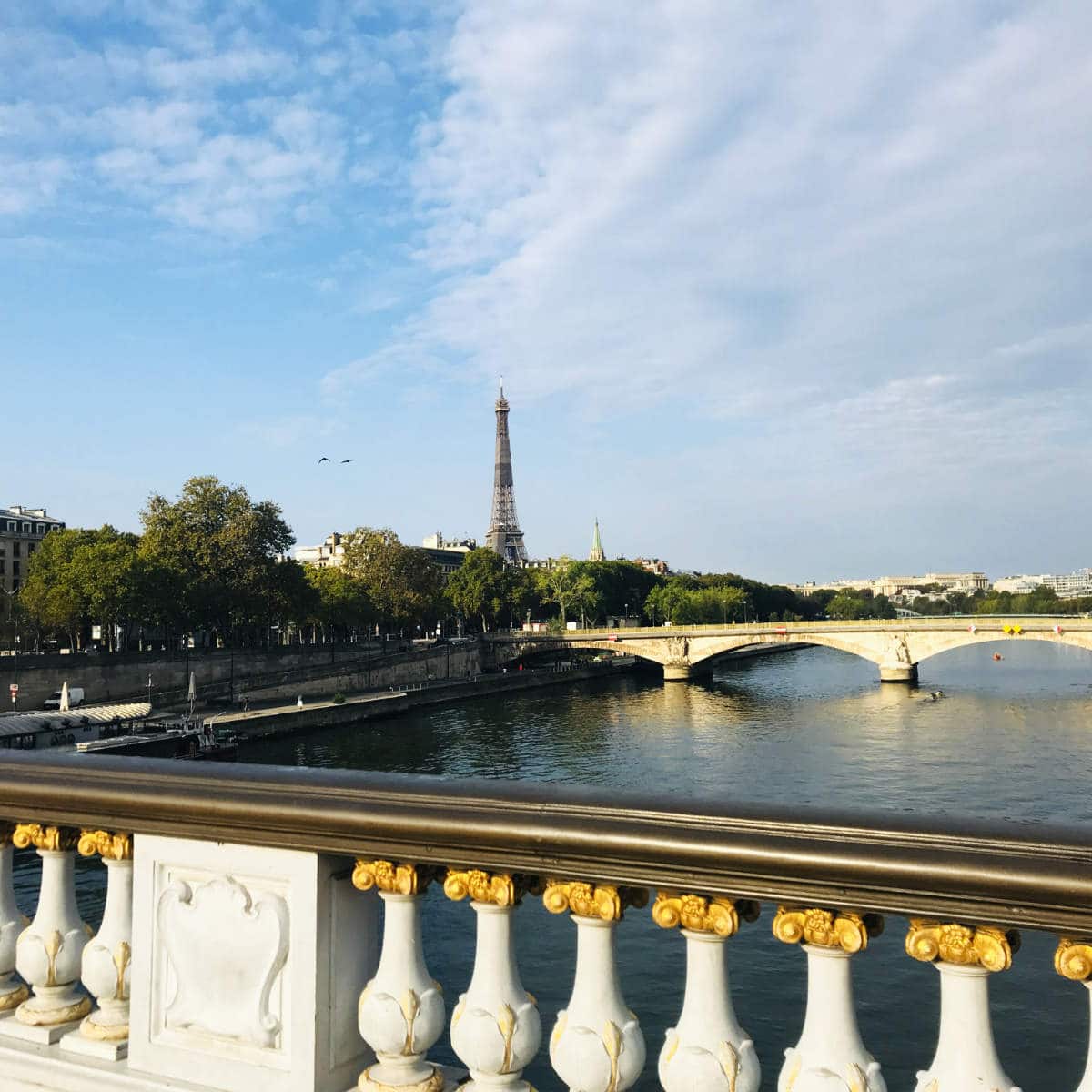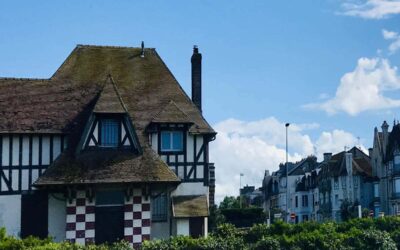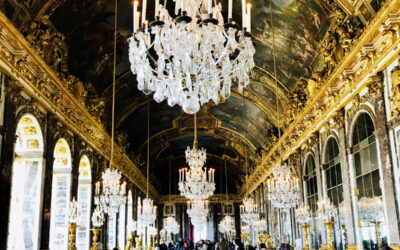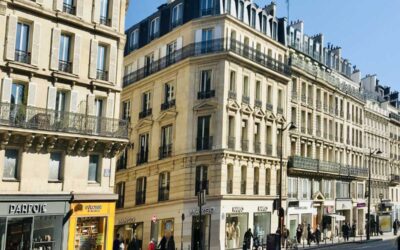If there is anything that can give the Eiffel Tower a run for its money, it is the famed bridges of Paris. In a variety of architectural styles, these charming artistic pieces of infrastructure are the heart of the city.
With the river Seine running through center of Paris and a couple of small islands dotting its path, it is the bridges that connect the city’s different neighborhoods and quartiers.
From the imprudently-named Pont Neuf to the Instagram-favorite Pont Alexandre III and the lovers’ favorite Pont des Arts, it can be hard to pick a favorite.
Visitors to Paris are always surprised to find out that some of these stunning bridges have been around for more than 600 years, and are still in use today. On the other hand, some of the other bridges are less than a ten years old.
They are the heartstrings of the city. A backdrop in many a wedding photo, these bridges over the Seine are some of the most iconic landmarks of the City of Love.
Each bridge tells a story about the city’s history, and goodness there are quite a few stories to tell. So let’s explore the most interesting facts about the bridges in Paris, shall we? Allons-y!
- 1. There are 37 bridges in Paris that cross the Seine river.
- 2. Pont Neuf is the oldest bridge in Paris.
- 3. Pont Alexandre III is considered the most beautiful.
- 4. The Pont de Grenelle has the Statue of Liberty at its base.
- 5. The pedestrian Pont des Arts bridge attracts lovers' locks.
- 6. The Pont de la Concorde was constructed from the stones of the Prison at Bastille.
- 7. Napoleon Bonaparte named 2 bridges in Paris after his battlefield victories.
- 8. Pont Saint Louis bridge is named after a King.
- 9. The Pont Mirabeau has a famous song written about it.
- 10. The Pont National used to be named after Emperor Napoleon III.
- 11. The Pont de Change is featured in the novel Les Misérables by Victor Hugo.
- 12. The Pont Marie used to have houses lining it.
- 13. A bridge has existed on the site of Pont Notre Dame since antiquity.
- 14. The Pont Saint-Michel is recognizable for large "N" on its pillars.
- 15. Pont Royal has been renamed several times.
- 16. Pont de l'Alma was named after the Battle of Alma.
- 17. The Pont de la Tournelle has a statue of Sainte Genevieve nearby.
- 18. Pont Charles de Gaulle was named after the WWII general.
- 19. Pont de Bir-Hakeim is popular with tourists.
- 20. Passerelle Simone de Beauvoir is the newest bridge.
1. There are 37 bridges in Paris that cross the Seine river.
Paris has 37 bridges that go across the Seine river from the Left bank to the Right bank, as well as between the islands Ile de la Cité and Ile Saint Louis. This includes 5 pedestrian bridges and 2 rail bridges for the metro and trains.
But there are also several bridges that cross Canal St. Martin and Canal de l’Ourcq and Bassin de la Villette.
2. Pont Neuf is the oldest bridge in Paris.
The oldest bridge in Paris is the Pont Neuf which was constructed in 1607. The name translates to “New Bridge” as at the time this was a new more solid type of construction, meant to withstand the tides of the Seine river.
It stands on the western point of the Île de la Cité which is where the earliest settlements in Paris began, then known as Lutetia.
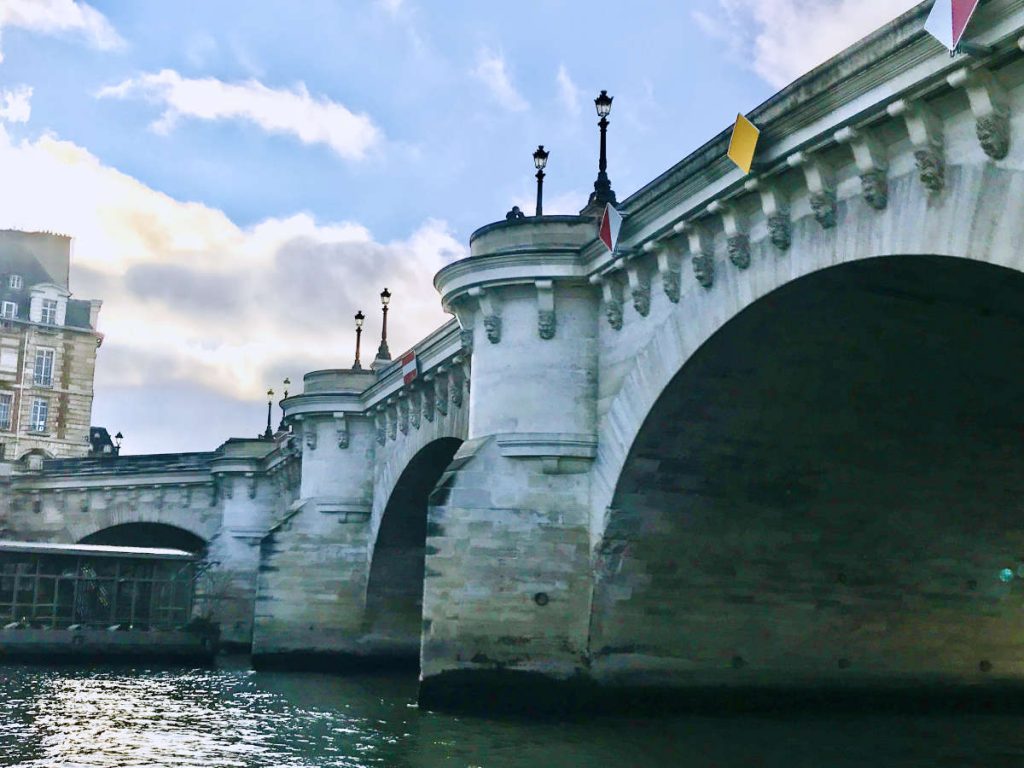
It was built by King Henri IV as part of his push to improve accessibility across Paris. Today it connects pedestrians and road traffic from the 1st arrondissement to the 6th.
At the same time it was built across Ile de la Cité, it also connected the tiny Ile des Templiers (Ile des Juifs) to the bigger island. It is here that Grand Master of the Knights Templar Jacques de Molay was burnt at the stake in March 1314 for heresy.
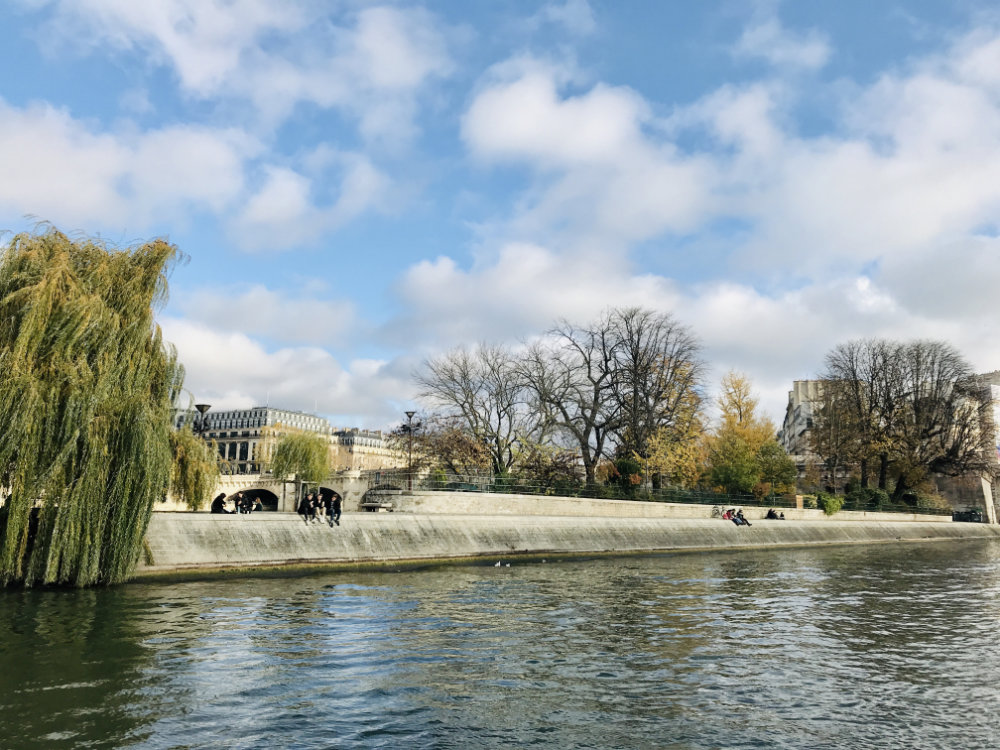
If you look out from the bridge, it is a wonderful spot to catch a view of the Eiffel Tower in the distance, along with expansive views on either side of the Seine.
3. Pont Alexandre III is considered the most beautiful.
The most beautiful bridge in Paris is undoubtedly the emblematic Pont Alexandre III, which is just calling is just a short walk away between Les Invalides and the Petit Palais in the 7th arrondissement.
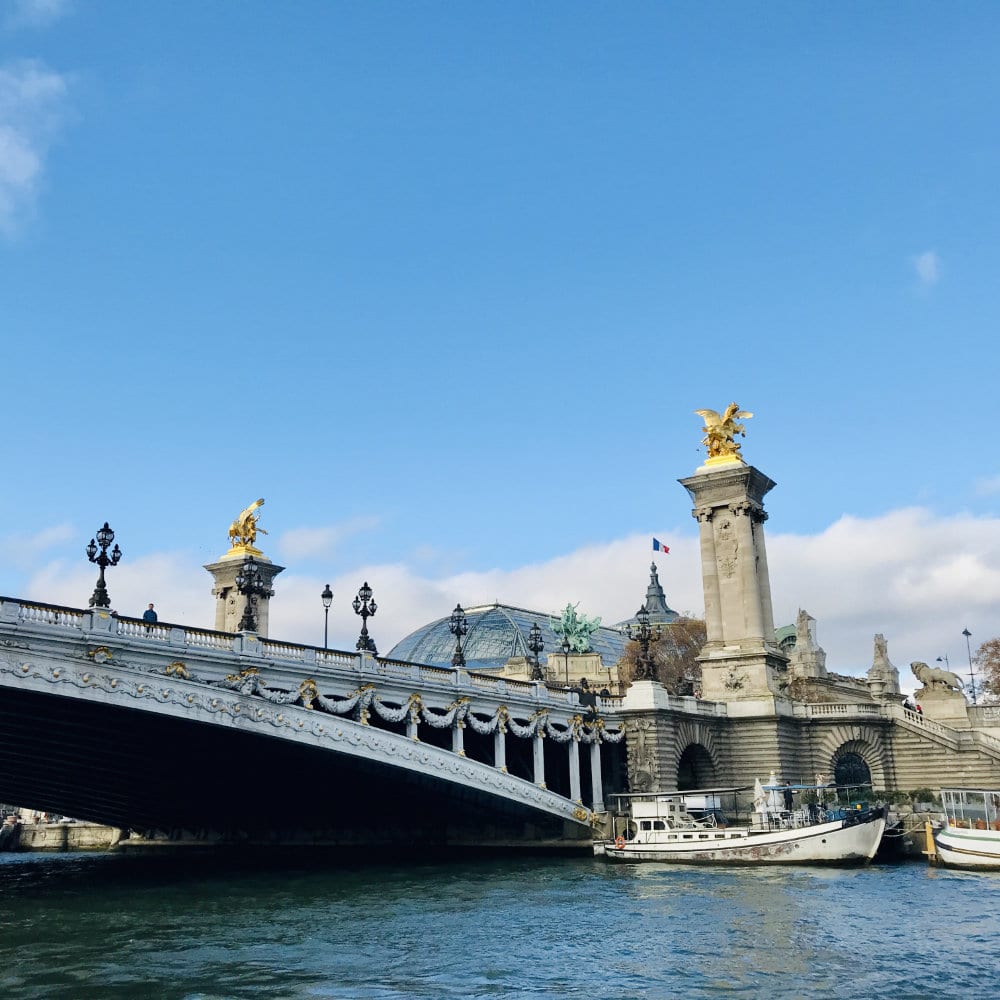
It is named after Russian Tsar Alexander III who had agreed to a Franco-Russian Alliance in 1892. His son Tsar Nicholas II laid the foundation stone in October 1896.
4. The Pont de Grenelle has the Statue of Liberty at its base.
On Pont de Grenelle bridge in the 15th arrondissement, across the island of Île aux Cygnes sits a mini version of the Statue of Liberty. It sits about a few 100 yards away from the Eiffel Tower in Paris.
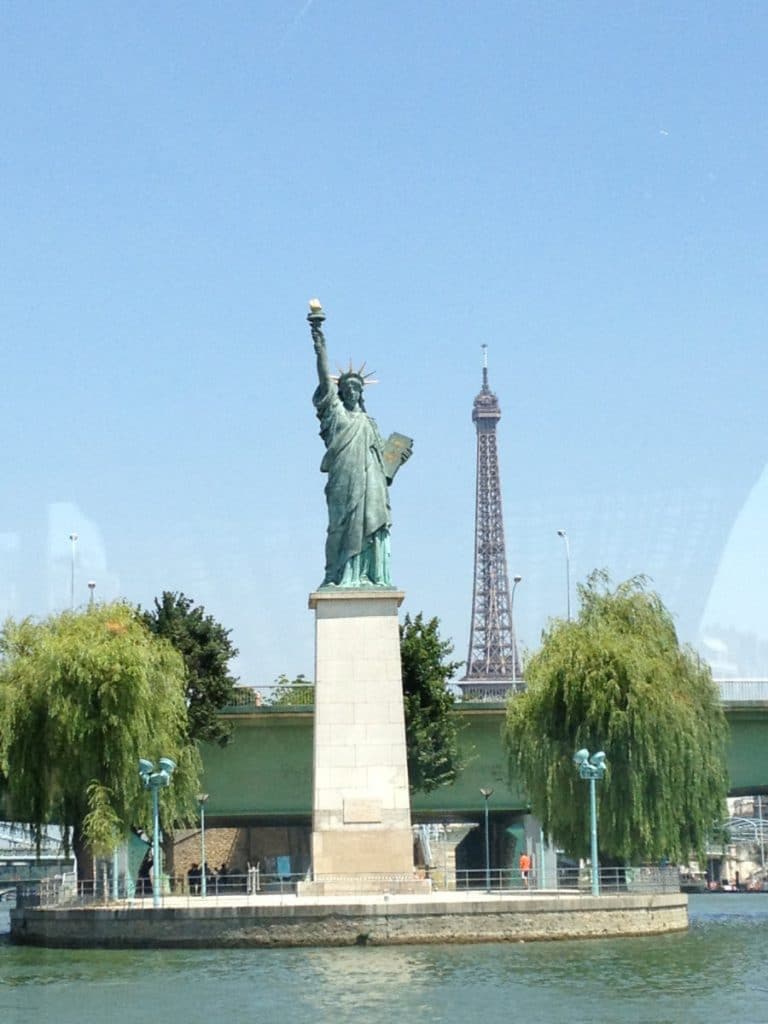
The mini Statue of Liberty given by the U.S. to France in 1889 to France as a return-gift to celebrate the French Revolution. This was 3 years after the main statue in New York was inaugurated after being given to the United States as a gift by the French.
The statue was turned originally towards the east in order to face the Eiffel Tower. In 1937, it was turned towards the west so that it would be facing the original statue in New York.
5. The pedestrian Pont des Arts bridge attracts lovers’ locks.
The Pont des Arts is one of the most famous pedestrian bridges in Paris, particularly for lovers. It is located on one side of Saint-Germain-des-Prés crossing the Seine towards Ile de la Cité.
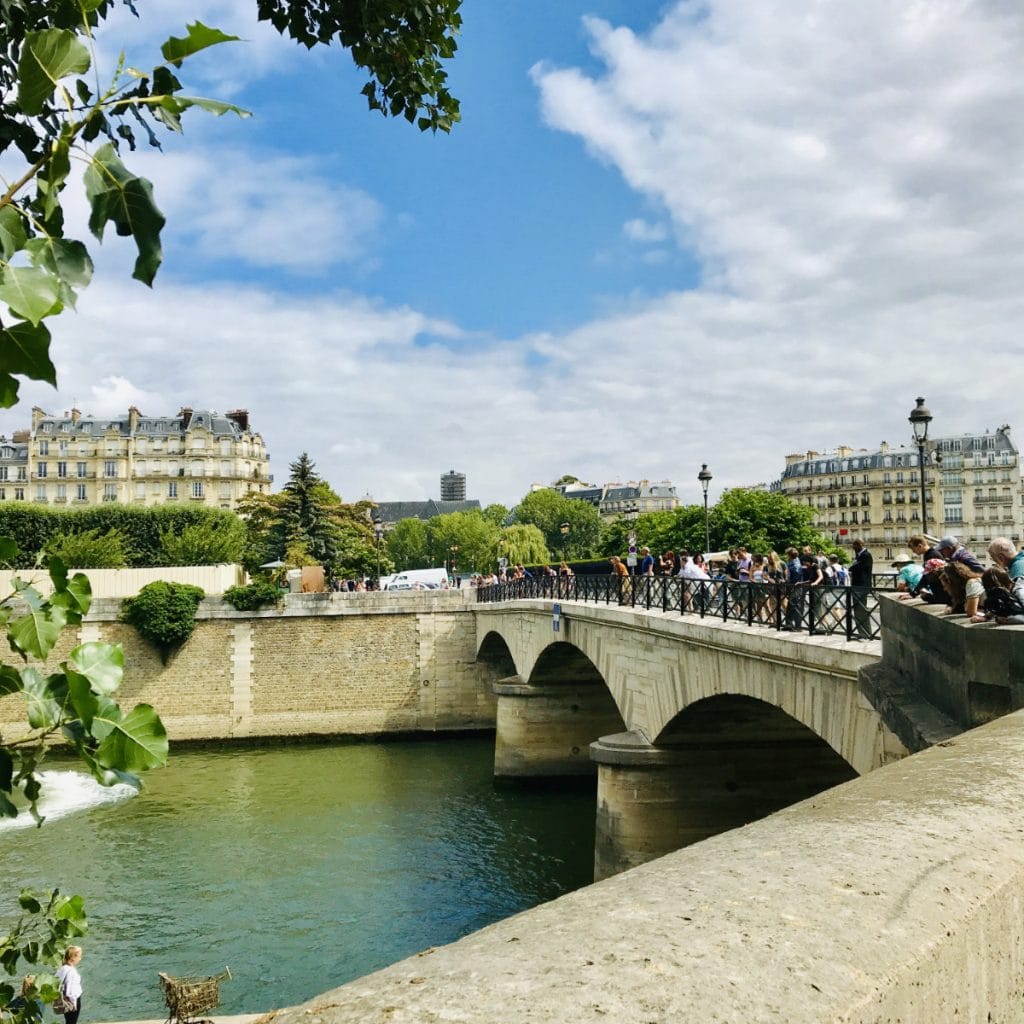
In the past, the bridge became famous as lovers would attach locks with their initials on the bridge to proclaim that their love would last a lifetime.
The Pont des Arts no longer allows locks to be attached as the weight of the locks was damaging the bridge. However it is still one of the most popular bridges in Paris, and certainly the most beautiful pedestrian bridge.
6. The Pont de la Concorde was constructed from the stones of the Prison at Bastille.
One of the emblematic places in Paris is the Place de la Concorde where the King, Marie-Antoinette and other nobles were beheaded during the French Revolution. Just across from it is the Pont de la Concorde bridge which leads from the Place de la Concorde, across the other side of the Seine to the Assemblée Nationale.
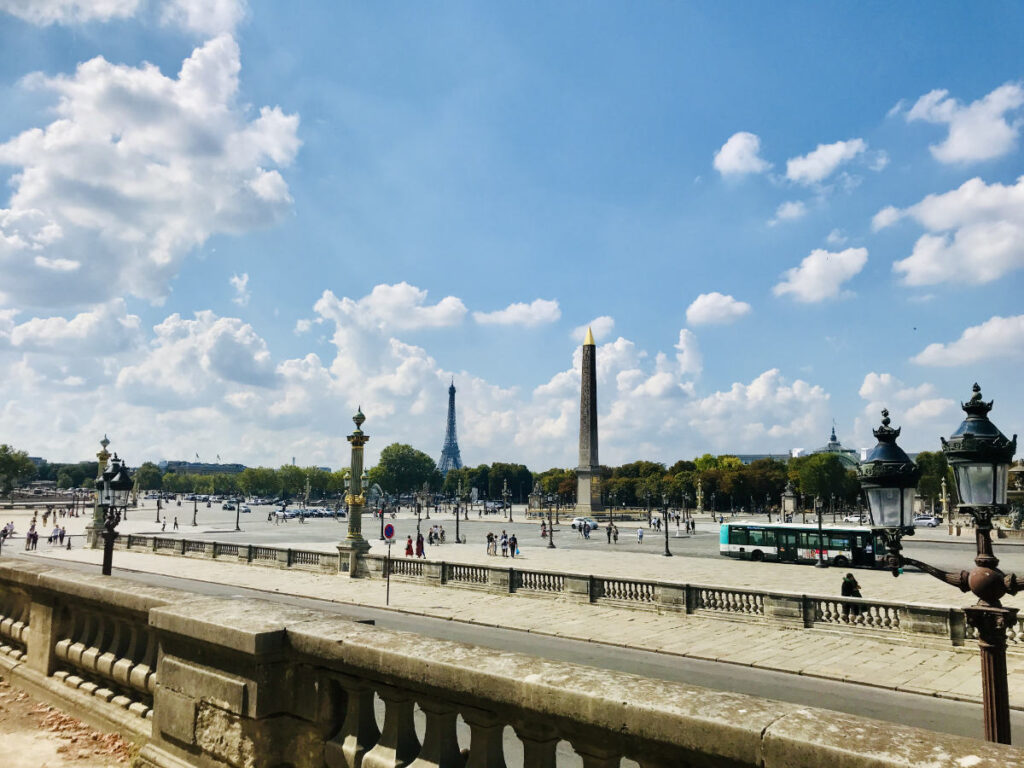
The Assemblée is the French version of House of Representatives (or House of Commons). In a symbolic and yet practical gesture, the the Pont de la Concorde bridge was built using some of the stones from the fortress prison at Place de la Bastille, showing the country’s progress from a monarchy to a Republic.
You can take a free walking tour to all the sights of the French revolution by following this itinerary.
7. Napoleon Bonaparte named 2 bridges in Paris after his battlefield victories.
After Napoleon Bonaparte seized power in France, he set about making his mark. He gave Paris three of its bridges, the Pont des Arts, Pont d’Austerlitz, and the Pont d’Iéna. The latter two are named after a couple of his famous victories in Europe.
8. Pont Saint Louis bridge is named after a King.
The Pont Saint Louis is a newer pedestrian bridge in Paris that is named after Saint King Louis, the only canonised King of France and one of the most famous saints in France.
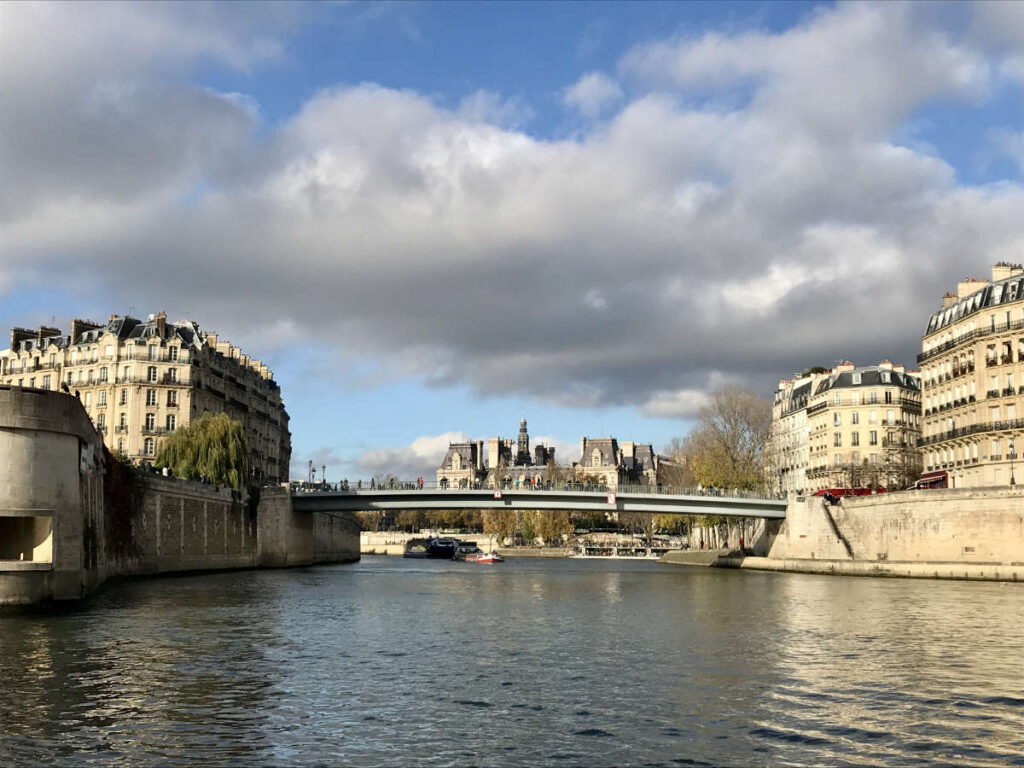
It leads from the Marais to Ile Saint Louis in the 4th arrondissement of Paris, paying tribute to this King who was annointed a saint for bringing back the Crown of Thorns to the continent from the Middle East.
9. The Pont Mirabeau has a famous song written about it.
One of the most famous poems about Paris, the Pont Mirabeau was first released in 1912 as a tribute to lost love by Guillaume Apollinaire.
Apollinaire was considered one of the foremost French poets of the early 20th century. Moving to Paris in 1900, he became fast friends with other famous contemporaries of his time including Pablo Picasso, Henri Rousseau, Gertrude Stein, French artist Marc Chagall, and more.
| French Poem about Paris | English Translation |
|---|---|
| Sous le pont Mirabeau coule la Seine Et nos amours Faut-il qu’il m’en souvienne La joie venait toujours après la peine | Under the Mirabeau Bridge flows the Seine And our loves Must he remind me of that Joy that always came after pain |
| Vienne la nuit sonne l’heure Les jours s’en vont je demeure | Let night ring the hour The days go by I remain |
| Les mains dans les mains restons face à face Tandis que sous Le pont de nos bras passe Des éternels regards l’onde si lasse | Hands in hands let’s stay face to face While under The bridge of our arms pass The eternal gaze on the wave so weary |
| Vienne la nuit sonne l’heure Les jours s’en vont je demeure | Let night ring the hour The days go by I remain |
| L’amour s’en va comme cette eau courante L’amour s’en va Comme la vie est lente Et comme l’Espérance est violente | Love goes like this running water Love flies away How slow life is And as Hope is violent |
| Vienne la nuit sonne l’heure Les jours s’en vont je demeure | Let night ring the hour The days go by I remain |
| Passent les jours et passent les semaines Ni temps passé Ni les amours reviennent Sous le pont Mirabeau coule la Seine | Pass the days and pass the weeks No time spent Neither love returns The Seine flows under the Mirabeau bridge |
| Vienne la nuit sonne l’heure Les jours s’en vont je demeure | Let night ring the hour The days go by I remain |
A plaque sits on the Pont de Mirabeau bridge in Paris, repeating the first lines of the poem. The singer Marc Lavoine would turn the famous poem into a classic song about Paris.
10. The Pont National used to be named after Emperor Napoleon III.
Napoleon Bonaparte’s nephew, Emperor Napoleon III set about changing medieval Paris to the 19th century version that we see today. Along with his architect Baron Haussmann, the city’s architecture was redesigned with grand boulevards, wider bridges and new buildings.
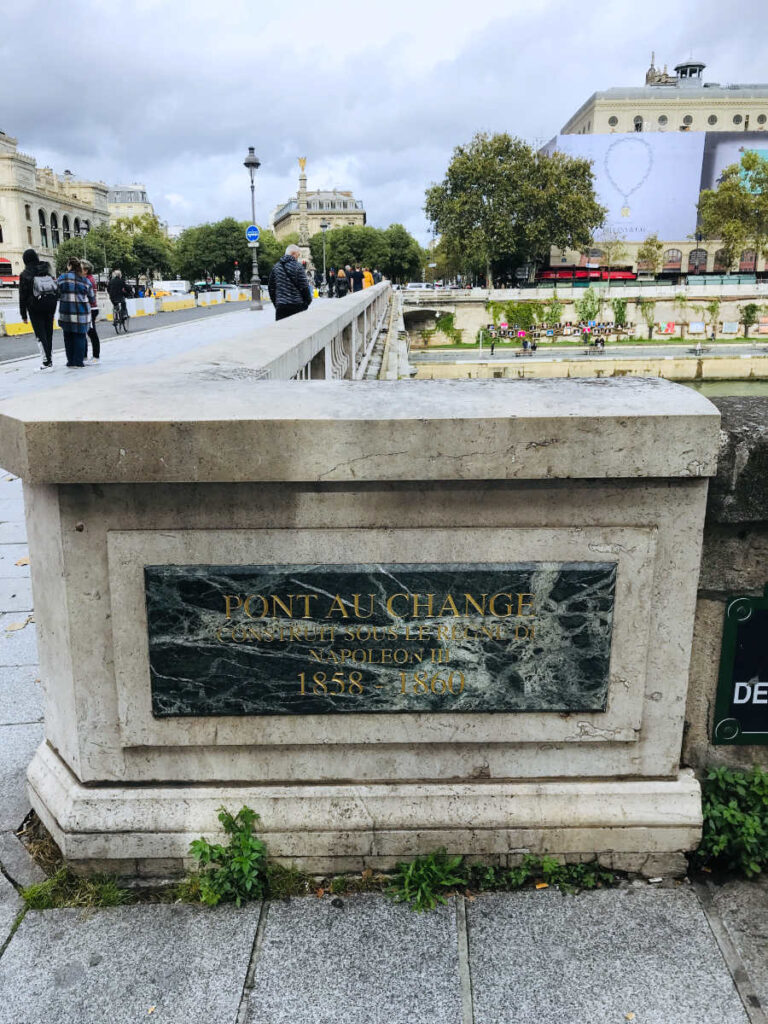
Among the bridges that Napoleon III had constructed in the 1850s was the “Pont Napoléon III” which is a road and rail bridge across the Seine from the 12th to the 13th arrondissements.
It was named as “Pont National” in 1870 after Napoleon III was deposed during the Franco-Prussian war.
11. The Pont de Change is featured in the novel Les Misérables by Victor Hugo.
The Pont de Change connects the Île de la Cité to the historical Palais de Justice and the Conciergerie to the Right Bank at the Place du Châtelet.
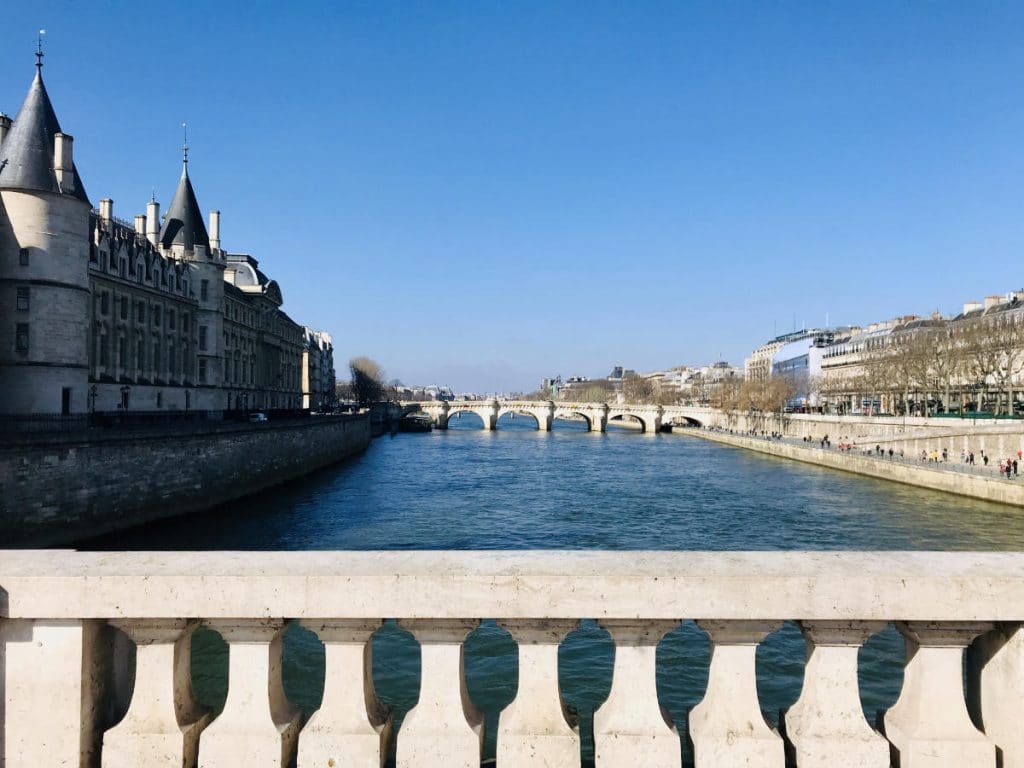
A bridge has stood here since the earliest settlements of Paris, but the current version dates back to Napoleon III in the 1850s.
In French writer Victor Hugo’s Les Miserables, the character of Police Inspector Javert comes to the Pont au Change and throws himself into the Seine, due to his inner turmoil at having to arrest the kind-hearted criminal Valjean.
12. The Pont Marie used to have houses lining it.
Pont Marie is the 2nd oldest bridge in Paris after Pont Neuf. The first stone of this small bridge in the 4th arrondissement in 1604.
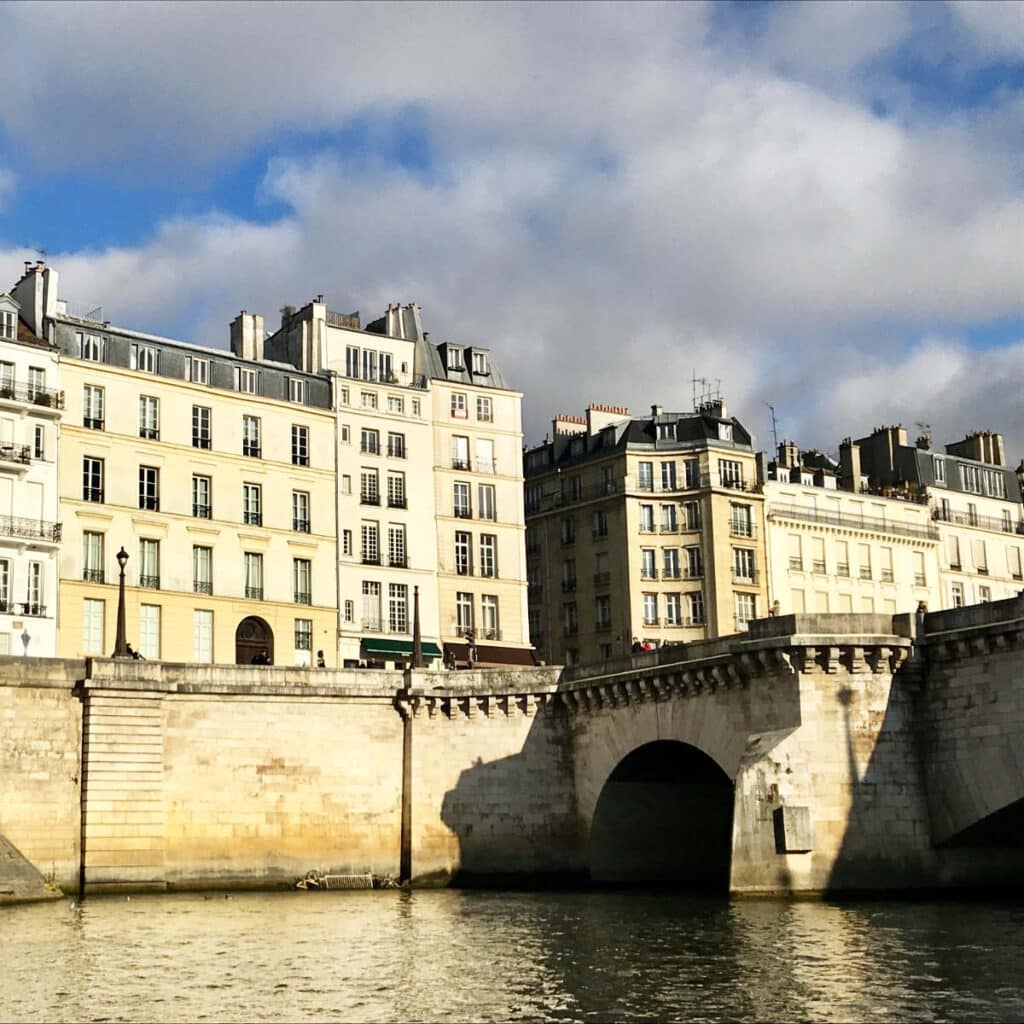
At one point, around 50 houses lined the bridge in the 17th century, but were later demolished. It was classed as a historic monument in 1887 and connects the Marais with the Ile Saint-Louis.
13. A bridge has existed on the site of Pont Notre Dame since antiquity.
The Pont Notre-Dame is a bridge near the famed Notre Dame Cathedral in Paris. The cathedral is on Ile de la Cité, and was once the site of an ancient temple and the historic center of Paris.
With pilgrims requiring access to the Ile de la Cité, a bridge in some form has existed at the site of the Pont Notre-Dame since antiquity. As such the bridge location is noted for being the “most ancient” in Paris (while the oldest bridge in Paris in its original state is the Pont Neuf).
14. The Pont Saint-Michel is recognizable for large “N” on its pillars.
With Notre Dame de Paris Cathedral and Sainte Chapelle a few footsteps away, the Pont Saint Michel is named after the smaller and more discreet chapel of Saint-Michel which is nearby.
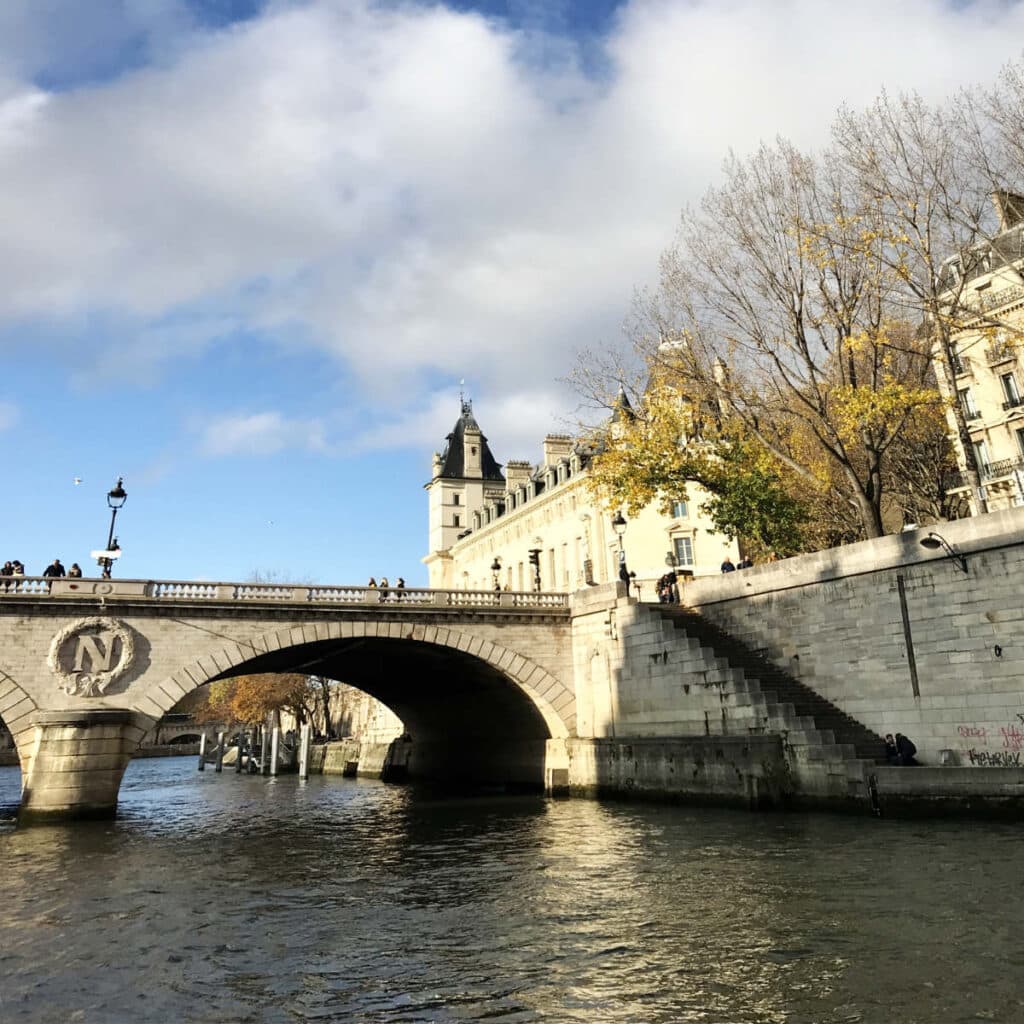
The original bridge dates back to 1378 and like the Pont Marie, both sides of the Pont Saint Michel bridge once were lined with houses.
The current bridge dates back to the 1850s. In the center of each bridge pillar is an “N”, reminiscent of the emblem of Emperor Napoleon III under whose reign the current-standing bridge was built.
15. Pont Royal has been renamed several times.
Pont Royal is the third oldest bridge in Paris, after the Pont Neuf and the Pont Marie. It was originally a wooden toll-bridge dating back to the 1600s that was built to replace the Tuileries ferry which ran at that point.
It has had several names including Pont Sainte-Anne (in deference to Queen Anne of Austria, wife of King Louis XIII) or Pont Rouge due to its red color.
The name Pont Royal came from Sun King Louis XIV (who also built the Palace of Versailles.) Napoleon Bonaparte briefly renamed it the Pont des Tuileries for the nearby Tuileries palace that used to stand there, but it returned to being the Pont Royal bridge after the Royal Restoration.
16. Pont de l’Alma was named after the Battle of Alma.
Among the new bridges was the Pont de l’Alma is named after the 1854 battle of Alma in which the French-English-Ottoman allies defeated the Russians.
The bridge to cross the Seine that was completed two years later was named Pont de l’Alma, and later gave its name to the metro station.
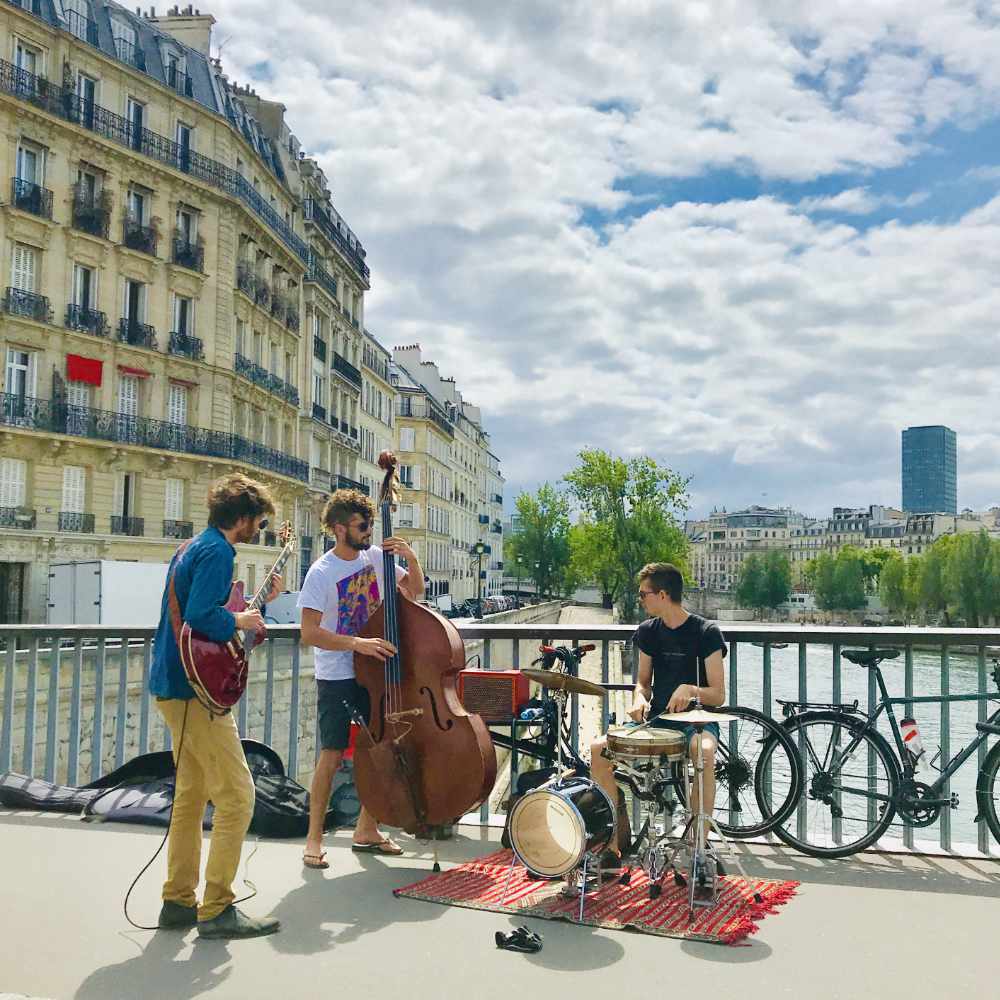
17. The Pont de la Tournelle has a statue of Sainte Genevieve nearby.
The term “Tournelle” traces its origin to a square turret constructed at the end of the 12th Century on the fortress of King Phillipe Auguste. The first wooden bridge here was built in 1620.
Today, the Pont de la Tournelle is most recognizable for the statue of Saint Genevieve nearby, the patron saint of Paris.

18. Pont Charles de Gaulle was named after the WWII general.
One of the most recognizable names in France is General Charles de Gaulle. At the start of WWII he was exiled in England and would go on to rally the French population to form a resistance to defeat the invaders.
The de facto leader of the French Resistance, General de Gaulle was hailed as a hero after D-Day. Riding on Allied tanks, he was at the liberation of Paris in 1944 after a long and disastrous war suffered by the French.
He would go on to become President, on two different occasions. At last count, Charles de Gaulle has over 3900 streets and monuments named after him in France including Pont Charles-de-Gaulle in Paris.
19. Pont de Bir-Hakeim is popular with tourists.
One of the most popular bridges in Paris is the Pont de Bir-Hakeim for its scenic views of the Eiffel Tower. The bridge has two levels, one for motor vehicles and pedestrians and the other for Line 6 of the Paris Métro.
It was originally named the Pont de Passy (a neighborhood in the 16th arrondissement), but was renamed in 1948 to commemorate the Battle of Bir Hakeim, fought by Free French forces against the German Afrika Korps in 1942.
20. Passerelle Simone de Beauvoir is the newest bridge.
One of the newest bridges in Paris is the the Passerelle Simone de Beauvoir, is a lens-shaped structure that was inaugurated in 2006. It is named after one of the most famous women in France, writer Simone de Beauvoir who became famous for her writings on both feminist theory and feminist existentialism.
Along with her partner Jean-Paul Sartre, the two philosophers were renowned in the late 20th century for their works.

If you enjoyed that article, you may like to read more interesting facts about Paris here. A bientôt!
